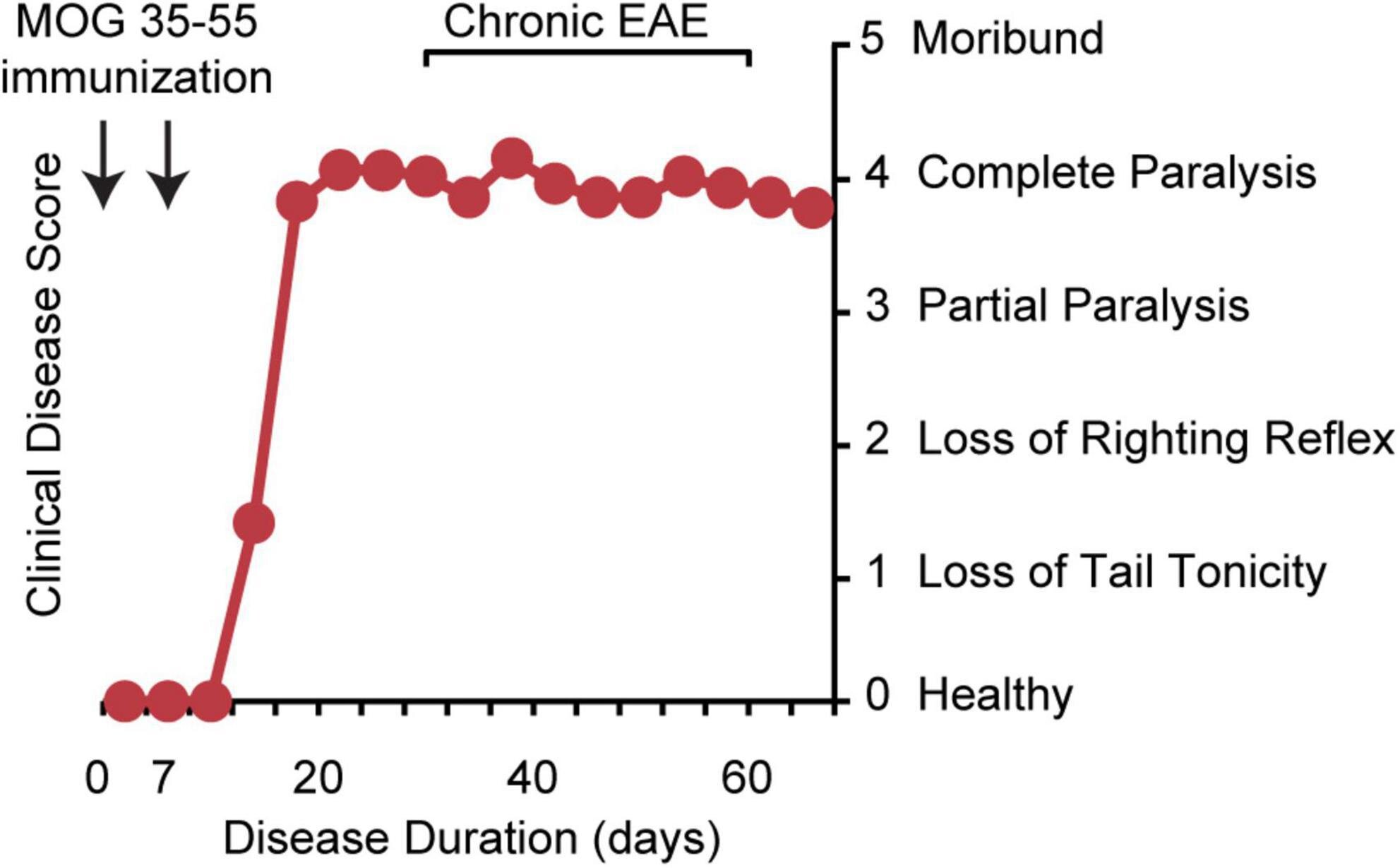
Researchers have identified a model to study treatments targeting the progression of multiple sclerosis
Induction of chronic EAE and clinical course of the disease. Chronic EAE is induced by subcutaneous immunization with MOG 35-55 peptide and Mycobacterium tuberculosis in complete Freund’s adjuvant on day 0 and again on day 7. Pertussis toxin is administered intraperitoneally on day 0 and day 2. Clinical disease is scored from 0 to 5 using 0 healthy, 1 complete loss of tail tone, 2 loss of righting reflex, 3 partial paralysis of a limb, 4 complete paralysis of one or both hind limbs, and 5 dying. Clinical signs of the disease usually first appear between 10 and 15 days, followed by a chronic phase of the disease characterized by severe gait disturbance and progressive gray matter atrophy. credit: Frontiers in Molecular Neuroscience (2022). DOI: 10.3389/fnmol.2022.1024058
A new study by scientists at the University of California, Los Angeles has identified an animal model that can be used to study treatments to improve disability in patients with multiple sclerosis.
Multiple sclerosis (MS) is an autoimmune and neurodegenerative disease in which the immune system attacks the nerves of the brain and spinal cord. There are many treatments that target immune mechanisms and reduce MS relapses, but none are designed to protect brain and spinal cord cells from damage. Existing treatments have limited effectiveness in slowing the accumulation of disability, and none actually improves disability.
Defining an animal model disease progression is a critical step towards finding better treatments, as the mechanisms underlying disease progression can be identified and then blocked.
Dr. Rhonda Voskull, MD, director of the Multiple Sclerosis Program at UCLA, and Alan McKenzie-Graham, PhD, associate professor of neurology, discovered animal model which has many similarities with progressive MS.
Previously, acute and recurrent forms of experimental autoimmune encephalomyelitis (EAE), and mouse model characterized by inflammation of the blood and spinal cord, has played a central role in the development of modern anti-inflammatory treatments for MS.
Here, Voskul and McKenzie-Graham reported on brain MRI and neuropathology in chronic EAE, revealing many signs of neurodegeneration shared with MS. In addition to the spinal cord, results included effects on cerebral cortexcerebellum and optic nerve, among others.
In the future, this model could be used by researchers to identify targets for treatments that improve gait, cognition, coordination and vision in MS.
The study was published in Frontiers in Molecular Neuroscience as part of a series on the need for a model for progressive MS.
Rhonda R. Voskul et al. Chronic experimental autoimmune encephalomyelitis is an excellent model for studying neuroaxonal degeneration in multiple sclerosis, Frontiers in Molecular Neuroscience (2022). DOI: 10.3389/fnmol.2022.1024058
Citation: Researchers identify model to study treatments targeting progressive multiple sclerosis (Oct. 25, 2022) Retrieved Oct. 25, 2022, from https://medicalxpress.com/news/2022-10-treatments-multiple-sclerosis.html
This document is subject to copyright. Except in good faith for the purpose of private study or research, no part may be reproduced without written permission. The content is provided for informational purposes only.


